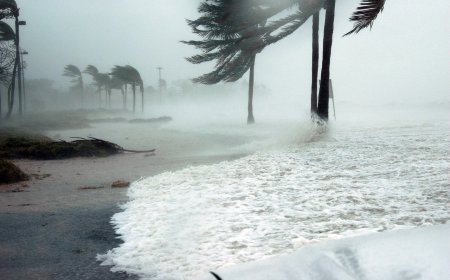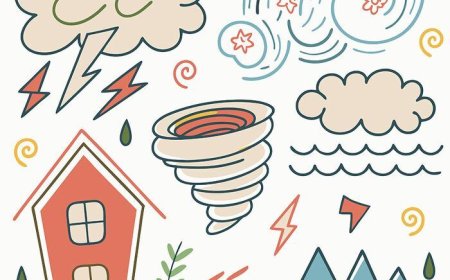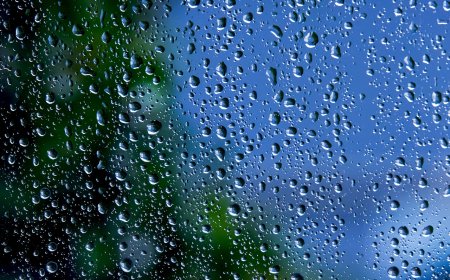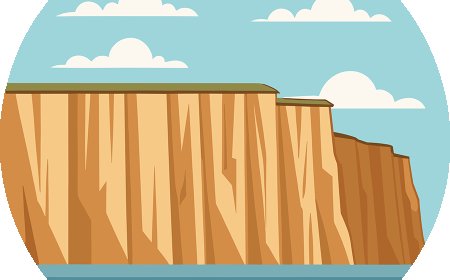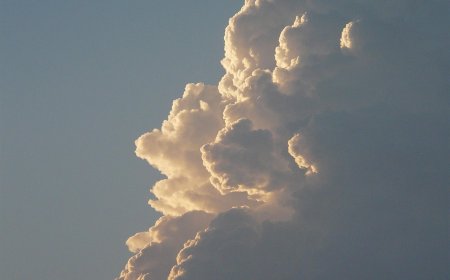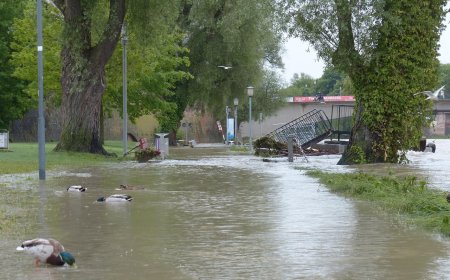Types of Clouds for Students Cloud Facts, Weather Patterns, and Identification
Explore the main types of clouds—cirrus, cumulus, stratus, and more. Learn how clouds form, what they tell us about weather, and how to recognize them in the sky.

🧭 Introduction
When you look up at the sky, what do you see? On some days, fluffy white clouds drift lazily overhead. On others, dark clouds roll in and bring rain or storms. These clouds aren't just pretty shapes—they're important signs of the weather happening around us. Clouds are made of tiny water droplets or ice crystals that gather in the sky when warm air rises and cools. Different types of clouds form at different heights, temperatures, and weather conditions. By learning to recognize them, we can often predict what kind of weather is coming next!
☁️ What Are Clouds Made Of?
All clouds begin the same way: when warm, moist air rises into the sky, it cools down. As it cools, the water vapor in the air condenses into tiny droplets or ice crystals. These tiny pieces gather together in the air, forming clouds. If the cloud gets heavy enough, the water may fall to the ground as precipitation—like rain or snow.
Even though clouds may look light and fluffy, some can weigh millions of pounds! Luckily, the air inside the clouds keeps the water suspended—until gravity takes over and it falls.
🌤️ The Four Main Cloud Types
Scientists group clouds into four main types based on how they look and where they form in the sky. These basic types can mix or change depending on weather conditions, but they all start with these shapes:
1. Cumulus Clouds
Cumulus clouds are the big, fluffy white clouds that look like cotton balls. They usually float in the sky during sunny days and mean fair weather. Cumulus clouds form low in the sky and have flat bottoms with puffy tops. However, if they grow tall and dark, they can turn into storm clouds.
2. Stratus Clouds
Stratus clouds are flat and gray, covering the whole sky like a thick blanket. These clouds often bring light rain or drizzle and make the day feel gloomy or cool. They are also low-level clouds, sometimes touching the tops of buildings or hills.
3. Cirrus Clouds
Cirrus clouds are high, wispy clouds that form very high in the sky, where it’s cold. They’re made mostly of ice crystals and often appear thin and feathery. Cirrus clouds don’t bring rain, but they can be a sign that a change in the weather is coming, especially if they spread across the sky.
4. Nimbus Clouds
Nimbus is the word scientists use for rain clouds. You might see clouds with “nimbus” in the name, like nimbostratus (flat rain clouds) or cumulonimbus (towering thunderstorm clouds). These clouds are usually dark gray or black and bring heavy rain, thunder, or lightning.
🌡️ Where Clouds Form: Low, Middle, High
Clouds also get their names based on the altitude, or height, at which they form:
- Low-level clouds (below 6,500 ft): stratus, cumulus
- Mid-level clouds (6,500–20,000 ft): altostratus, altocumulus
- High-level clouds (above 20,000 ft): cirrus, cirrostratus, cirrocumulus
Some clouds—like cumulonimbus—can stretch through all three levels of the sky when they grow tall, forming giant thunderstorm towers.
🔍 Cloud Watching and Weather Predictions
Clouds can be beautiful to look at, but they’re also helpful weather clues. Here are a few tips for young cloud-watchers:
- White, puffy cumulus clouds often mean good weather.
- Flat gray stratus clouds suggest possible drizzle or rain.
- Tall cumulonimbus clouds mean a storm might be on the way.
- Thin cirrus clouds can mean a weather front is approaching.
Watching the sky regularly can help you learn to guess what kind of day it will be just by looking at the clouds!
🏞️ Fun Cloud Formations
Sometimes, clouds take on amazing shapes or behave in unusual ways. Here are a few cool types you might spot:
- Lenticular clouds – shaped like flying saucers, usually near mountains
- Mammatus clouds – bumpy clouds that hang down like bubble clusters
- Fog – technically a cloud at ground level
- Contrails – clouds formed by airplane engines high in the sky
Though not always part of the main four types, these clouds are fun to learn about and even photograph.
📚 Vocabulary Words
| Word | Definition |
|---|---|
| Condensation | When water vapor turns into liquid water droplets |
| Precipitation | Rain, snow, sleet, or hail that falls from clouds |
| Altitude | Height above the ground or sea level |
| Nimbus | A cloud that brings rain or snow |
| Cirrus | Wispy clouds that form high in the sky |
👧 Kid-Friendly Summary
✅ Interactive Quiz
Q1: What are clouds made of?
A. Dust and smoke
B. Water droplets and ice crystals ✅
C. Sunlight
D. Air bubbles
Q2: What type of cloud looks like cotton balls and usually means nice weather?
A. Stratus
B. Nimbus
C. Cumulus ✅
D. Cirrus
Q3: Which clouds are high, wispy, and made of ice?
A. Stratus
B. Cirrus ✅
C. Cumulus
D. Altocumulus
Q4: What does “nimbus” mean when talking about clouds?
A. Windy
B. Big
C. Rainy ✅
D. Sunny
Q5: What type of cloud forms at ground level?
A. Fog ✅
B. Cirrostratus
C. Nimbostratus
D. Altostratus
Scoring:
5/5 = ☁️ Cloud Captain
3–4 = 🌤️ Weather Watcher
1–2 = 📘 Time to Look Up and Learn!


















































